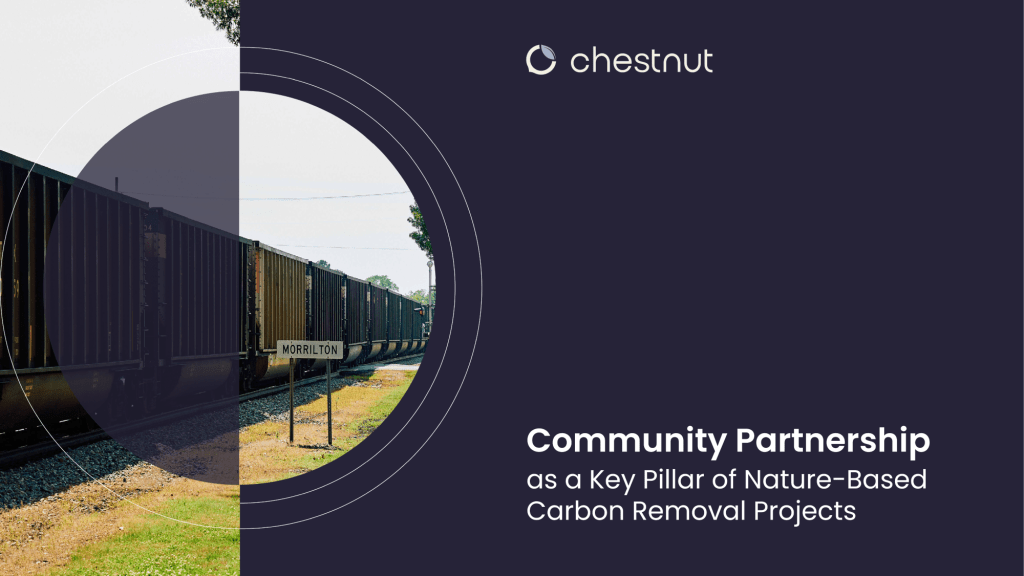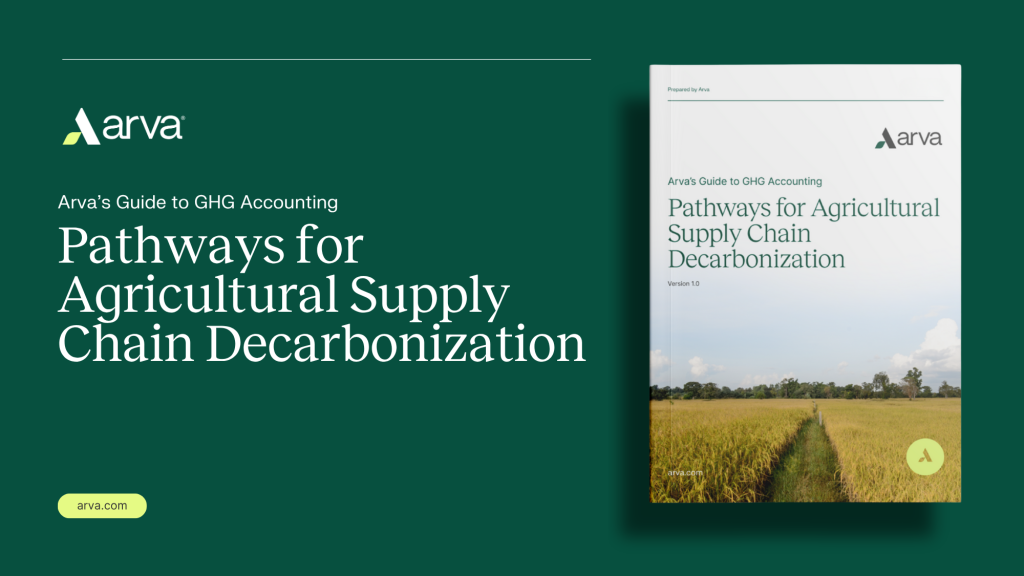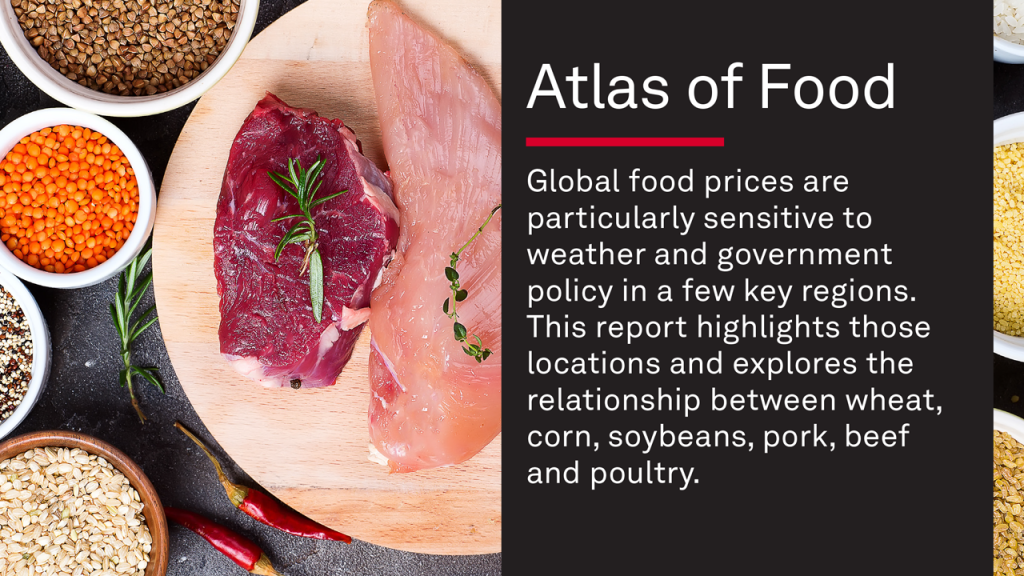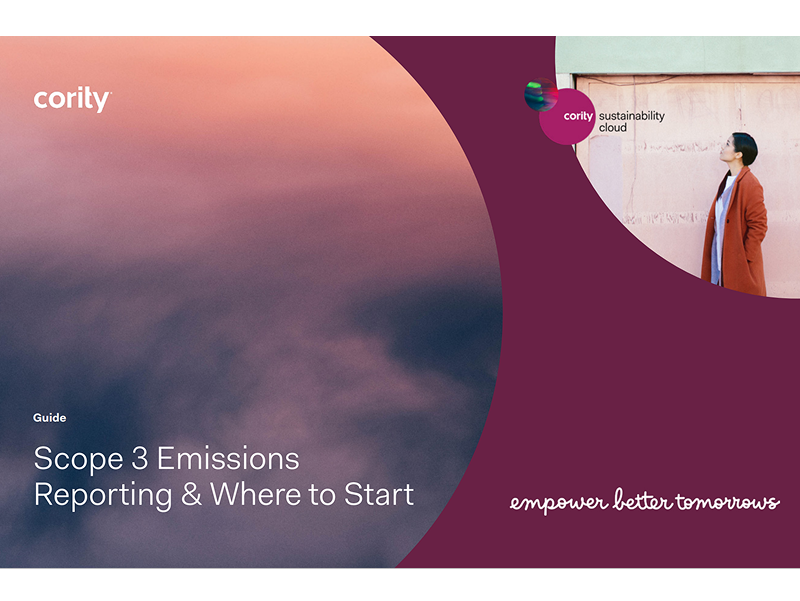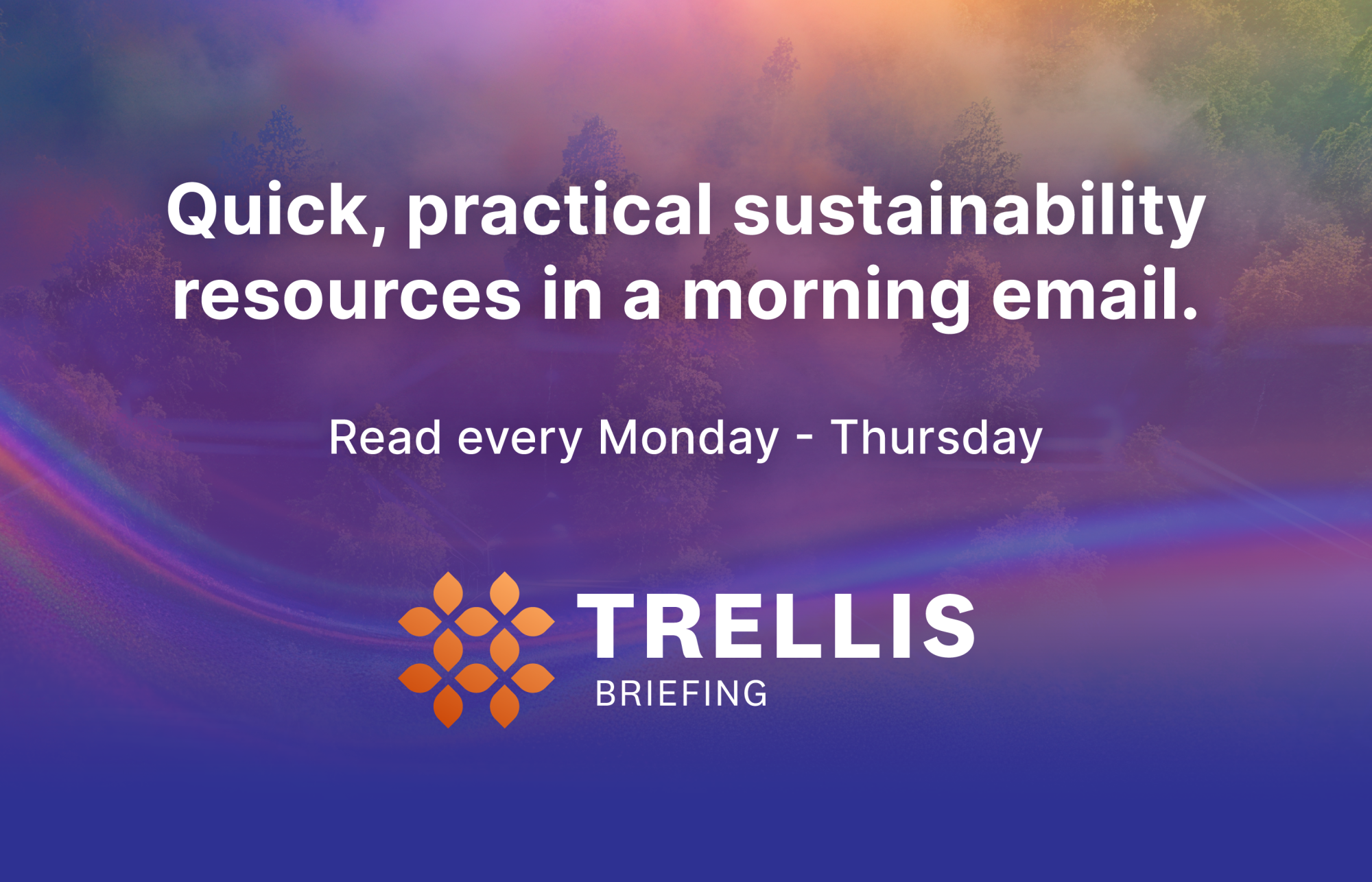Levi Strauss water strategy expands focus from factories to communities
After missing a key water-use goal, the denim icon sets a new 2030 plan for reuse, pollution control and restoring stressed watersheds. Read More
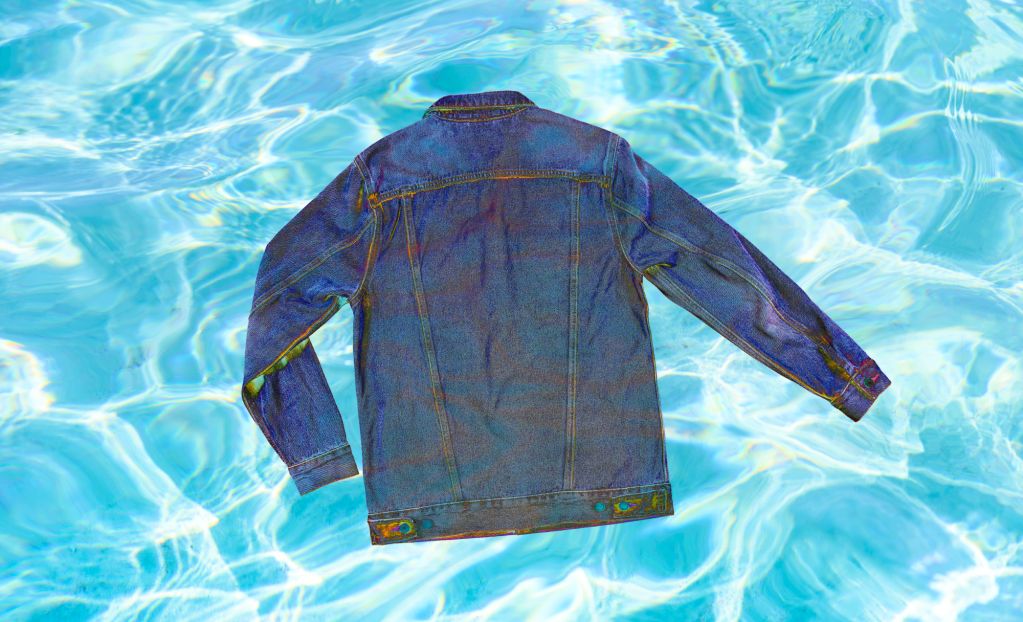
- The company’s new 2030 strategy targets a 15% cut in freshwater use and 40% water reuse across its supply chain.
- A 27% reduction fell short of its 2019 goal to halve water use in high-stress regions by 2025 .
- New initiatives will focus on watershed restoration in supplier communities, including Pakistan and Bangladesh.
Creating a pair of jeans requires as much water as an average U.S. household consumes in several days, according to Levi Strauss. Multiply that by $6.4 billion in annual sales, and the brand guzzles 66 billion gallons of freshwater a year.
Continuing its work to reduce the environmental impact of the denim industry, Levi’s latest strategy expands water stewardship from its plants to the communities in which they operate. A 35-page report, released Oct. 22, spells out this attempt to make a “positive impact” on water resources across 30 supplier nations.
One key target is a 15 percent decrease in freshwater use across the Levi’s supply chain compared with 2022 levels. This comes on the heels of the company admitting to missing its goal to halve consumption in parts of the world with water vulnerabilities by 2025 over 2018 levels.
“Our aim is to build on our long-held commitment to water stewardship to make a positive impact on water quality, quantity and access while protecting and restoring nature,” Jennifer DuBuisson, senior director of global sustainability at Levi Strauss, told Trellis via email.
Water pollution pressures
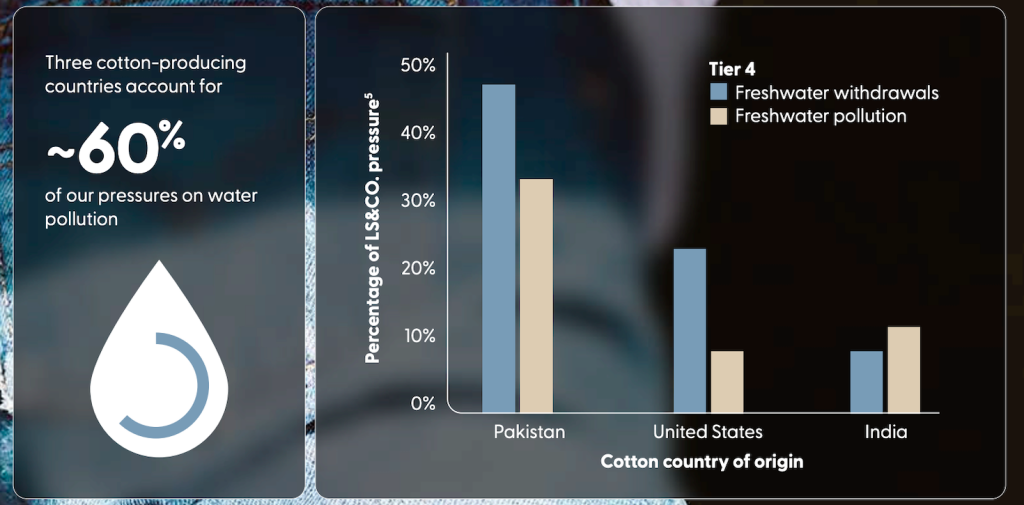
Levi’s latest strategy also aims to:
- Recycle or reuse 40 percent of water across manufacturing and mills, open-sourcing methods. This will account for two-thirds of the planned water reduction, with the final third resulting from efficiency measures.
- Ensure that dyeing and other operations that create wastewater discharges comply with the Zero Discharge of Hazardous Chemicals Foundation.
- Better understand “hot spots” for water use and pollution in raw materials and textile spinning plants.
The company took a hard look earlier this year at the opposite ends of its supply chain — cotton field and factory floor — which are responsible for the biggest impacts. Using the Science-Based Targets for Nature framework, Levi’s found that 70 percent of its effects on freshwater systems come from growing cotton in stressed regions. Tier 1 manufacturing, including pollution from laundering, contributes between 16 to 38 percent of its impacts to freshwater.
The company also appointed Chris Callieri, its first supply chain officer to report to the CEO, in August, and launched a program to help suppliers in India adopt renewables a month later.
Its previous year’s progress included wet finishing suppliers in high-risk regions shrinking freshwater usage by 27 percent, a savings of about 1.8 billion gallons over six years. The amount of reused and recycled water among suppliers rose by 85 percent in that same period.
Water resilience
Moving forward, the company’s 2030 strategy includes the following water resilience efforts, which lack public numeric targets:
- Creating projects to restore watersheds in high-stress areas, including in Pakistan and Bangladesh.
- Bringing water, sanitation and hygiene projects to more people in developing regions.
Where it stands
The denim pioneer has long been a leader of water responsibility efforts in an industry in which only one-third of brands are currently working on water stewardship targets, and just 17 percent track progress, according to The Global Fashion Agenda Monitor’s report for 2024.
Freshwater reductions progress
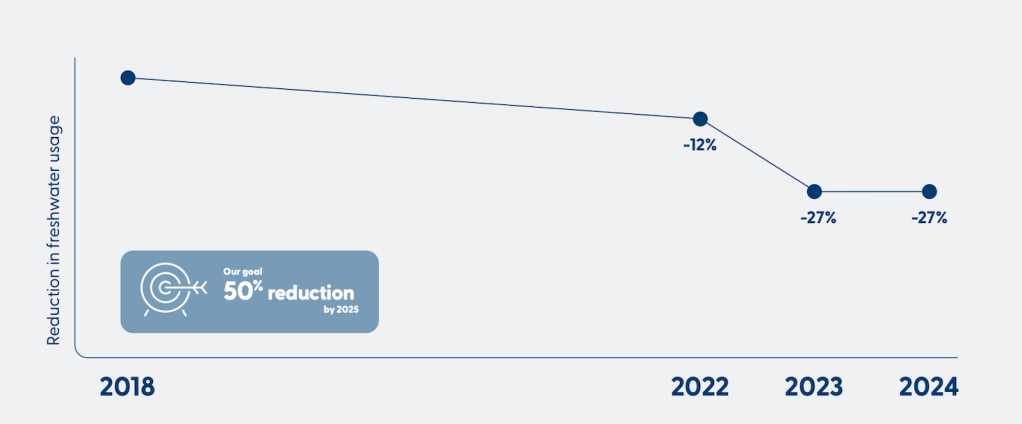
Levi’s effort to create “waterless” jeans, which began in 2007, led to a Water>Less strategy that is now the open-source norm for the industry. Its techniques reduce water usage by 96 percent, according to the company.
Similarly, Levi’s is recognized as the first apparel brand to set global wastewater discharge standards, which it did in the 1990s. And 20 years ago, it joined the launch of the Better Cotton Initiative to reduce water usage in the growth of the crop.
Today, some 2.2 billion people globally continue to lack access to clean water, according to WaterAid America, which engages with Levi’s on water sanitation projects in India. In a press statement, WaterAid America’s CEO Kelly Parsons praised the partnership as addressing “one of the most challenging, but solvable, problems of this generation.”
“Their 2030 water strategy embodies the ambition needed for a water-resilient future,” said Jason Morrison, head of the CEO Water Mandate and president of the Pacific Institute.

Subscribe to Trellis Briefing
Featured Reports

The Premier Event for Sustainable Business Leaders

